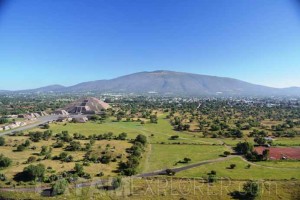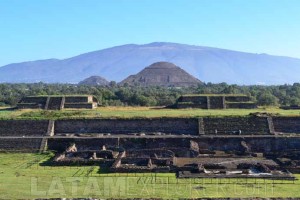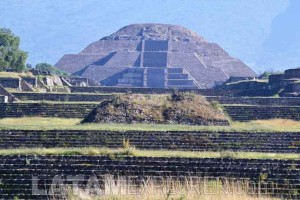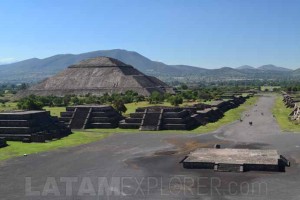Home > Destinations > Mexico > Mexico City (part 2)
Mexico City, Mexico
Part 2 - Beyond the central areas
As seen in the previous article, Mexico City is a place of great proportions with enough attractions to keep visitors busy for an extended period of time. Supposing your first few days in the Mexican capital have been used to know the historical center, Chapultepec Park and the whole area between both along Paseo de la Reforma, it is now time to figure out what else this city has to offer.
For that, it is a wise decision to get at least somehow familiar with the region’s transportation system since, although it is possible to explore all the attractions mentioned earlier on foot, this will no longer be a feasible option from now on, given the greater distances considered. Even though taxis abound, are easy to catch and are not absurdly expensive, they are hardly the most efficient way to move around since their average speed is usually not very high. Prefer, whenever possible, using the metro: one of most comprehensive networks in the world, charging just a nominal fee and served by frequent trains, making trips much faster than other means most of the time – just like any other big city of the world, beware of your belongings. Another very interesting option, particularly for long stays, is subscribing to the Ecobici program, a shared bicycles program, that allows user to take a bike anywhere and return it anywhere else without charging a specific fee per trip (as long as each one is shorter than 45 minutes – you can always return your bike within 45 minutes and then get another immediately afterwards).

Following along Paseo de la Reforma from Zona Rosa and through Chapultepec Park, you arrive to the Polanco and Lomas neighborhoods. This is an exclusive residential area, with excellent hotels and restaurants, high-end office building and embassies, designer boutiques and art galleries. In these surroundings you will find the Soumaya Museum, located in a building 46m (150ft) tall covered by 16,000 aluminum slabs. This is considered to be one of the most important art museums in the world, featuring works by Rodin, Renoir, Van Gogh, Picasso, Cèzanne, Matisse and others.
If instead of crossing Chapultepec Park, your instinct decide to guide you southwards after admiring the Angel of Independence, you will be heading to the heart of the most bohemian neighborhood of the city, the Zona Rosa. Roma and Condessa, two neighborhoods located slightly further into the south, have gone through an overall renovation after the 1985 earthquake and nowadays present a welcoming atmosphere. Roma has attracted several Latin restaurants while Condessa, more upscale, is characterized by its art deco buildings, parks and green streets, filled with cafes and restaurants offering open air seating.
Continuing to the south of the city, the main campus of Mexico Autonomous University, known simply as University City, impresses for its dimensions. This is one of the largest universities of the world, with some 300,000 students. Xochimilco, to the southeast of the University City, is one of the only areas in the city that resembles what Mexico City might have looked like upon the arrival of the first Spaniards. It is a village built among channels of what has once been a huge lake (dried out to build present day Mexico City). A few spots worth a visit here include the Flowers Market, the San Bernardino monastery and the Rosario Chapel. Another great program will have you browsing some of the channels aboard a small canoe.
The north region is, generally speaking, less attractive than the south areas of the city. There is, nevertheless, at least one major attraction not to be missed north of the capital’s historic center. The Basilica of Our Lady of Guadalupe, the main sanctuary of the American continent, is located in the village of Guadalupe, 6km (4mi) away from the Zocalo. It can be easily reached by metro’s line 6.
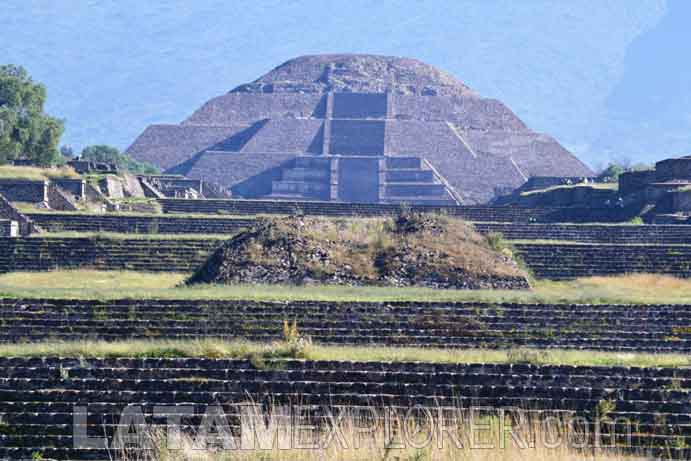
Finally, although not located in Mexico City proper, the ruins of Teotihuacan are practically a must see for anyone who happens to be at the capital. Located just 50km (31mi) away from downtown, Teotihuacan was one of the most important pre-Columbian cities and its name means “where men become gods”. Besides its most well-known attractions, like the Pyramid of the Sun, the Pyramid of the Moon and the Quetzalpapalotl Palace, a series of squares, sidewalks and secondary palaces spell a somewhat magical feel to this place. It is strongly recommended to tour the site accompanied by a guide, hopefully an archeologist, in order to make the most of the trip.
